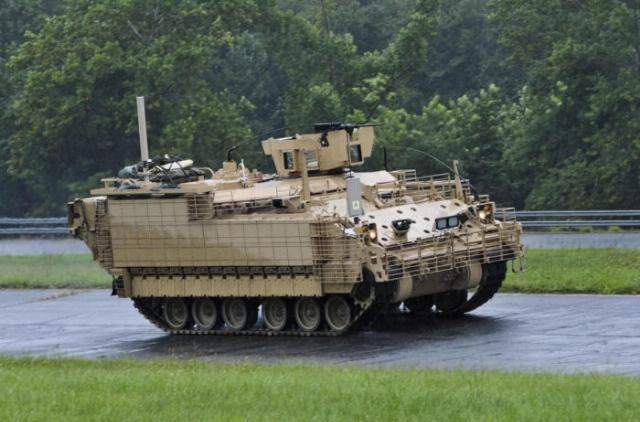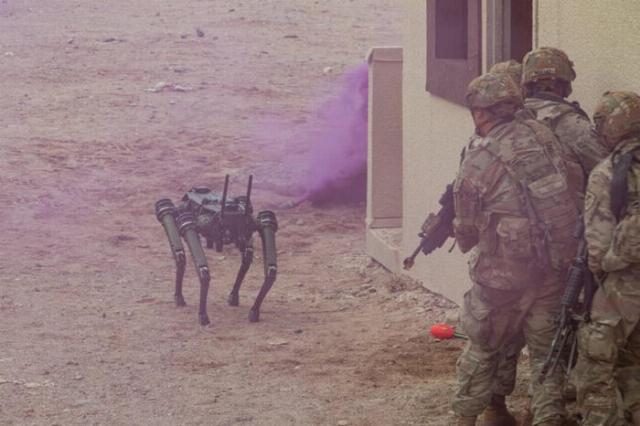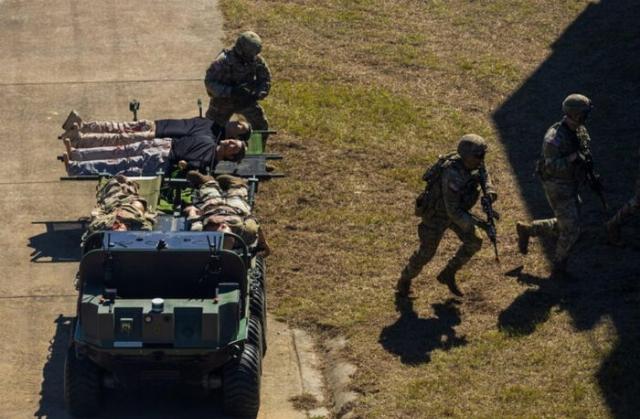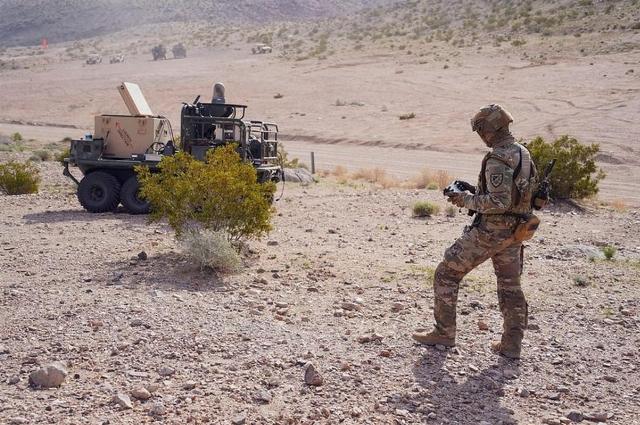According to foreign media, the Office of Accelerated Development and Critical Technologies of the US Army (Rapid Capabilities and Critical Technologies Office, RCCTO) continues to introduce autonomous capabilities into its arsenal. It plans to form the army's first human-machine platoon within two years (fiscal year 2027).
The stated goal of human-machine integration formations (HMIF) is to increase the safety of military personnel and reduce their cognitive and physical stress. The new unit is expected to include the deployment of ground-based and aerial unmanned solutions in armored and infantry configurations.
"HMIF will introduce robotic systems into units so that machines, not soldiers, make first contact with the enemy," said Lieutenant Colonel Jonathan Judy, RCCTO deputy chief for human-machine interaction. "The safety of our soldiers is at the heart of everything we do."
Speaking at the AUSA Global Force conference, D. Judy stressed that the basic set of equipment to be used by the service includes both manned and unmanned vehicles.
Regarding armored vehicles, the man-machine division is planned to be equipped with an armored multi-purpose vehicle (AMPV), which will be used to control robotic combat systems (RCV).

Armoured Multi-Purpose Vehicle from BAE Systems
It is reported that the AMPV was developed by BAE Systems and will replace the M113 armored personnel carriers in service with the combat groups of armored brigades.
In turn, infantry units will use vehicles to transport infantry squads (Infantry Squad Vehicle, ISV) and small vehicles to transport multi-purpose equipment (Small Multipurpose Equipment Transport, S-MET).

Infantry Squad Vehicle from GM Defense
The ISV, supplied by GM Defense, is a fully integrated military platform based on the chassis of the Chevrolet Colorado ZR2 midsize truck with a rollover protection system. This is a 4x4 amphibious transport vehicle capable of transporting an infantry unit of nine people across the battlefield.
The S-MET is an uninhabited ground vehicle (NNT) that is supposed to become a robotic "mule" capable of performing various tasks and reducing the weight normally carried by soldiers.

Using a robot dog during exercises
Other ground assets that the army intends to use in future highly mobile multinational formations include ORIGIN (an S-MET machine raised above the ground with various modular payloads) and the "four-legged robotic dog" (a remote-controlled ground reconnaissance robot used in front of foot units).
The troops will also use a vehicle for infantry (Dismounted Unit Soldier Transport, DUST). It is a battery-powered wheeled vehicle that allows one or two soldiers to transport up to 500 pounds (227 kg) of equipment, supplies, or the wounded over rough terrain and inside buildings.

Medical evacuation of the wounded using robotic transport
As aerial systems, formations will have two reconnaissance unmanned aerial vehicles (UAVs) with remote control or support for waypoints for real-time video shooting: a Medium–Range Reconnaissance (MRR) (company-level UAV) and a short-range reconnaissance (SRR) (platoon-level UAV).
In addition, the army plans to use:
- The Hunt and Releasable Kill (HaRK) is a medium–range attack UAV that drops guided and unguided cluster munitions.;
- "Low Altitude Stalk and Strike Ordnance" (LASSO) is a barrage munition (BB) with an anti–personnel or anti-tank warhead;
- A "throwbot" is a rolling robot with an electric drive and remote control that can be thrown manually or dropped from a UAV.
It is noted that both armored and infantry units will be equipped with combat robots for kinetic and non-kinetic effects. At the same time, a key role in the decision-making process will be given to human operators.
To speed up this process, the army intends to expand the use of artificial intelligence (AI) and machine learning (MO) capabilities.
Problems of promising human-machine formations
Despite the fact that more and more efforts are being made to integrate robotic systems into the structure of the department, many problems remain in this area.
A report released in January 2025 by the Congressional Research Service (CRS) states that off-road VEHICLE autonomy is "problematic" and requires "a lot of soldier intervention."
Robotic vehicles also have problems detecting obstacles and bypassing them. In addition, they still cannot move at a speed that allows them to keep up with manned platforms, which can slow down entire columns.
The integration of communication and software capabilities is another obstacle, as robotic systems must securely connect to networks and exchange information without interference from the enemy.
In its report on the National Defense Authorization Act for fiscal Year 2025, the Senate Armed Services Committee noted its concerns about some procurement programs related to robotic systems.
According to the materials of the resource shephardmedia.com

